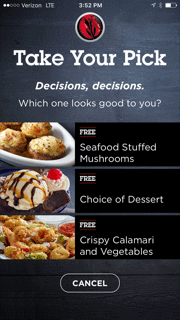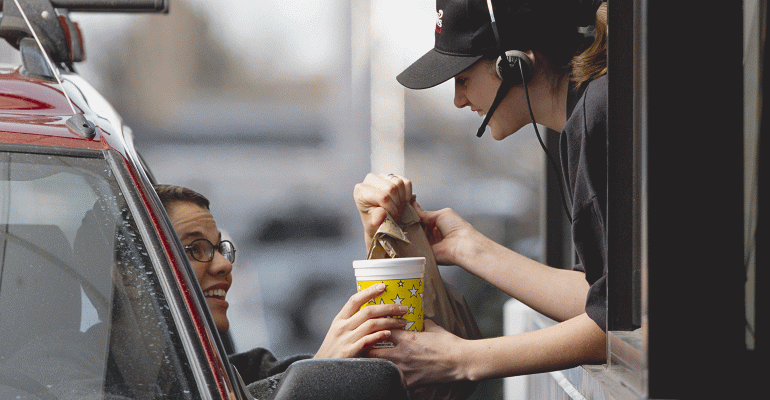When the calendar turns to a new year, it typically signifies new things. But that’s not the case for restaurant traffic.
The NPD Group forecasts little or no growth traffic growth for restaurants in 2018, exactly the same as last year.
But what will be new for the industry this year? Here’s what to expect:
Convenience above all
Consumers, who will be more pressed for time than ever, will make convenience their top priority.
“Technology was supposed to make our lives easier. It’s just made things faster,” said NPD analyst Bonnie Riggs. “Convenience and price will trump all.”
Among those who will be even more strapped for time — and in need of convenient meals — are working women, whose growth rate in the workforce is rising faster than that of men.
Next year, women are projected to increase their share of the workforce to 46.9 percent, from 46.5 percent a decade ago, according to the Bureau of Labor Statistics. By 2024, that percentage is expected to increase to 47.2 percent, or 77.2 million women in the workforce.
While more women working won’t totally turn around the industry, Riggs expects the trend to have a positive impact.
“It’s going to drive traffic for certain venues, meeting this convenience need, especially at dinnertime,” she said.

The comforts of home
Whether women or men, the spot where consumers will eat dinner most this year won’t actually be at a restaurant.
“The most popular place to eat out this year will be our home,” Riggs said.
According to NPD, 50 percent of dinners purchased from restaurants are consumed at home, and Riggs expects that to grow in 2018.
While operators may be concerned that meal delivery kits will fulfill consumer needs to eat more meals at home — effectively cutting restaurants out of the picture — Riggs dismissed that idea. Meal kits, while conveniently packaged and delivered right to the doorstep, still have be cooked, which makes them too time consuming, she said, adding, “the market for meal kits is too small from a price standpoint.

Get ready-to-eat
The only growth in the industry next year will be from quick-service restaurants, not full-service operators, NPD forecasted. But operators can still take action.
“Full-service operators can drive their business forward any way they can get food and beverage into the home,” Riggs said.
A growing number of operators have already begun facilitating these “blended meals” at home. In the year ended February 2017, 18 percent of in-home meals included at least one ready-to-eat item from foodservice, an increase from 15.5 percent in 2015, according to NPD data.
Among those offering such items is Chicken Salad Chick, a 79-unit full-service concept, which offers a Quick Chick section located at the front of each restaurant with to-go containers of 12 flavors of chicken salad, as well as gourmet sides such as grape salad, pasta salad, broccoli salad and fresh fruit.
“Not everybody has time to sit down and eat. We want to make it easy to go, take it back to the office or home or to an event,” Scott Deviney, Chicken Salad Chick CEO, told Nation’s Restaurant News earlier this year.
Delivery goes even more digital
 Delivery will continue to be a must-have, but what will be different in 2018 is the growth in digital ordering. Digital ordering has posted rapid growth in the last five years, and the most recent data reveal its represents 53 percent of all delivery orders, up from 33 percent in 2013.
Delivery will continue to be a must-have, but what will be different in 2018 is the growth in digital ordering. Digital ordering has posted rapid growth in the last five years, and the most recent data reveal its represents 53 percent of all delivery orders, up from 33 percent in 2013.
“Delivery needs will be a catalyst for growth, along with other means, to get a convenient meal,” Riggs said.
Historically the bailiwick of pizza and Asian concepts, more restaurants in more categories have been adding delivery and digital ordering. McDonald’s added mobile ordering and delivery via UberEats in 2017, and Denny’s began offering takeout and delivery via a new mobile and online ordering system launched last May.
“This is not for everybody; it's a must-have for most,” Riggs said. “For some smaller chains, it’s just not doable. They’ll have to find other means to be competitive in the digital arena.”
Value battle
Price will remain another top concern in 2018, which means consumers will be looking for more value at restaurants.
“Look for another round of value wars,” Riggs said. “It’s going to be a big value year.”
One way that is likely to manifest is the continued use of limited-time offers, which Riggs said we’ll see even more of in 2018, and new loyalty programs.
 In October, Red Lobster joined the ranks of major chains with an app-based loyalty program, My Red Lobster Rewards. Members can earn points for spending that can be redeemed for various offers on a future restaurant visit, as well as put their name on a waiting list at a restaurant. Eventually, they’ll be able to use the app to place a to-go order.
In October, Red Lobster joined the ranks of major chains with an app-based loyalty program, My Red Lobster Rewards. Members can earn points for spending that can be redeemed for various offers on a future restaurant visit, as well as put their name on a waiting list at a restaurant. Eventually, they’ll be able to use the app to place a to-go order.
"We want our loyal guests to know how much we appreciate them, so we designed a program that rewards them for their love of seafood,” Salli Setta, president of Red Lobster, said in a press release. “Guests can earn points simply by dining with us, and the My Red Lobster Rewards app makes it easy to accumulate, track and redeem points right from their mobile phone."
Restaurants will use loyalty programs to build frequency, Riggs said.
“You’ll see a lot more operators offering loyalty programs just to stay competitive,” she said.
Correction: Dec. 20, 2017 This story has been updated with the latest unit count for Chicken Salad Chick.





